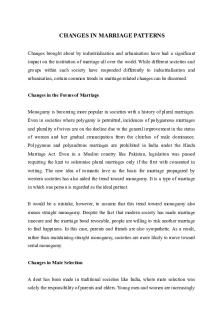Examination of passive ROM and capsular patterns in the hip PDF

| Title | Examination of passive ROM and capsular patterns in the hip |
|---|---|
| Course | Doctor of Physiotherapy |
| Institution | University of Sargodha |
| Pages | 1 |
| File Size | 64.6 KB |
| File Type | |
| Total Downloads | 106 |
| Total Views | 132 |
Summary
To learn how we assess the physical examination or range of motion of the hip joint, read this document. Students can perform a practical demonstration on their own after studying it....
Description
Examination of passive ROM and capsular patterns in the hip. Klässbo M1, Harms-Ringdahl K, Larsson G.
Author information Abstract BACKGROUND AND PURPOSE: The present study was conducted to examine passive hip range of motion (PROM) for patients with hip dysfunction, including pain, with or without hip osteoarthritis, to arrange and describe PROM patterns and to count the number of hips presenting Cyriax's and Kaltenborn's capsular patterns. METHOD: The study is theory-testing, observational, cross-sectional and descriptive. One hundred and sixty-eight patients (mean age 61.7 years, range 36-90 years), 50 with no hip osteoarthritis, 77 with unilateral hip osteoarthritis and 41 with bilateral osteoarthritis, based on radiological reports, were consecutively recruited by physicians in primary health care and orthopaedic settings. One examiner tested PROM bilaterally, by use of a goniometer and a standardized protocol. PROM limitations were calculated by comparing norms from the symptom-free hips (n = 100) in the study, from Kaltenborn and, in patients with unilateral hip osteoarthritis (n = 77), from the non-osteoarthritis hip. The limitations were arranged by size in PROM patterns. The patterns and the numbers of hips with patterns corresponding to Cyriax's and Kaltenborn's capsular patterns were counted. RESULTS: Between 68 and 138 PROM patterns were identified by use of different PROM norms for defining limitations. Few osteoarthritis hips showed Cyriax's capsular pattern and none Kaltenborn's capsular pattern. CONCLUSIONS: The concept of capsular pattern for the hip should be re-examined. No support was found in the present study for its existence. It is impossible to anticipate radiological evidence of hip osteoarthritis from the multitude of PROM patterns. Every patient should be regarded as unique....
Similar Free PDFs

The passive
- 8 Pages

RANGE OF MOTION ROM
- 1 Pages

ROM (Range Of Motion
- 7 Pages

Changes IN Marriage Patterns
- 4 Pages

The Passive Voice Exercises
- 3 Pages
Popular Institutions
- Tinajero National High School - Annex
- Politeknik Caltex Riau
- Yokohama City University
- SGT University
- University of Al-Qadisiyah
- Divine Word College of Vigan
- Techniek College Rotterdam
- Universidade de Santiago
- Universiti Teknologi MARA Cawangan Johor Kampus Pasir Gudang
- Poltekkes Kemenkes Yogyakarta
- Baguio City National High School
- Colegio san marcos
- preparatoria uno
- Centro de Bachillerato Tecnológico Industrial y de Servicios No. 107
- Dalian Maritime University
- Quang Trung Secondary School
- Colegio Tecnológico en Informática
- Corporación Regional de Educación Superior
- Grupo CEDVA
- Dar Al Uloom University
- Centro de Estudios Preuniversitarios de la Universidad Nacional de Ingeniería
- 上智大学
- Aakash International School, Nuna Majara
- San Felipe Neri Catholic School
- Kang Chiao International School - New Taipei City
- Misamis Occidental National High School
- Institución Educativa Escuela Normal Juan Ladrilleros
- Kolehiyo ng Pantukan
- Batanes State College
- Instituto Continental
- Sekolah Menengah Kejuruan Kesehatan Kaltara (Tarakan)
- Colegio de La Inmaculada Concepcion - Cebu










